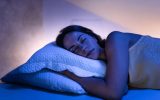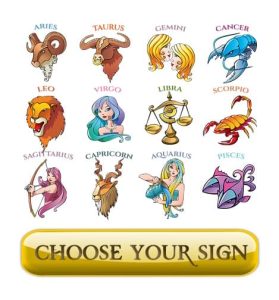Insomnia is the sleep disorder most frequently found in the general population, and occurs, albeit in a lower percentage than adults, even in pediatric age. Insomnia is called that set of psychophysical conditions in which one has difficulty sleeping at night.
Symptoms
The symptoms of insomnia can be varied and can occur individually or in combination. Other times we can find them as different phases of chronic insomnia:
·Difficulty initiating sleep – “initial” insomnia;
·Difficulty maintaining and consolidating sleep – “intermediate” insomnia;
·Waking up earlier than the desired time – “terminal” insomnia.
During the visit it is easy to understand at least one of these manifestations associated or not with some daytime symptoms caused by sleep deprivation: getting up already tired in the morning, reduction in work productivity, decline in short-term memory, irritability, reduction of mood, and overall poor quality of life.
Causes
Insomnia can be caused by internal diseases, psychiatric disorders (depression) or the use/abuse of substances or medications; in all other cases in which one of these conditions is not identifiable we speak of primary insomnia.
There are psychosocial factors such as work stress, night shifts, difficult family conditions (divorce, problems with children, etc.) that can predispose to the onset of insomnia.
The presence of a genetic predisposition responsible for the altered regulation of the sleep-wake rhythm has also been confirmed.
Types of insomnia
According to the latest edition of the International Classification of Sleep Disorders and the DSM-IV, in relation to the duration of the symptom we identify chronic insomnia (present in the last 3 months at least 3 times a week) and short-term insomnia (appearing less recently three months).
We can then identify different subtypes of insomnia:
·Psychophysiological: when the patient manifests a condition of excessive cognitive and somatic “alertness” when going to bed; many patients experience a feeling of “fear” of the night that awaits them;
·Idiopathic: it is insomnia with no apparent cause, present for an undated time, probably since childhood or pre-school age, and which has never undergone lasting remission. It could be associated with congenital conditions or a genetic predisposition;
·Paradox: the patient does not have the “perception” of his night’s rest and complains of a condition of nocturnal wakefulness in the face of good instrumentally quantified sleep;
·Inadequate sleep hygiene: the sleep-wake rhythm and the quality of sleep are influenced by daytime and evening activities which can have a negative effect on the night.
Who is most likely to suffer from it?
Several studies show how women, especially over the age of 65, are more affected by insomnia. Some stages of life such as pregnancy, menopause or advanced age are more frequently associated with insomnia.
Children and insomnia
Children can suffer from insomnia and the causes can be multiple, some of which have an organic basis so be careful not to interpret everything as “a whim” or “blaming” of the children or parents.
However, there are two major “chapters” that need to be explored when investigating a problem of insomnia in children:
·sleep onset disorders by association: when, in the state of wakefulness that precedes falling asleep, objects, situations or ceremonies that normally accompany the child’s falling asleep are suddenly missing;
·disorder due to inadequate definition of limits: it is the difficulty on the part of parents to establish rules when falling asleep and to enforce them with consequent refusal by the child to go to bed at a specific time or to stay there all night.
How is it diagnosed?
The diagnosis of insomnia is mainly clinical: a careful investigation of the patient’s symptoms, the personal pathological history and the lifestyle habits of patient allow us in most cases to make a correct diagnosis and set the right therapy .
If you suspect that insomnia is masking a condition of alteration of the sleep-wake rhythm, more frequently the so-called “phase delay”, a test called actigraphy may be indicated.
However, polysomnography is not indicated unless there is a suspicion that other sleep pathologies cause insomnia, e.g. sleep apnea or restless legs syndrome.
How is it treated?
Therapy for insomnia can make use of a non-pharmacological approach aimed at globally improving “sleep hygiene” through general indications which are referred to as “sleep hygiene rules”.
Cognitive-behavioral therapy identifies, through individual interviews, incorrect attitudes towards the night, providing the patient with the tools necessary to improve the behaviors responsible for poor sleep.
Progressive muscle relaxation may also be indicated or, if non-pharmacological approaches are not sufficient, there are drugs that can be prescribed by specialists after evaluation of the individual.
Sleep hygiene: advice
In general we have indications that can be valid for all patients. A piece of advice of fundamental importance is to maintain the right exposure to light during the day and to the dark in the late evening, in order to facilitate the nocturnal production of melatonin in our brain, which is necessary for inducing sleep.
It is recommended to maintain regular sleeping and, above all, waking up times. Avoid the use of exciting drinks in the late evening, do not abuse relaxing herbal teas either because their side effect is an increase in nocturnal diuresis with an increase in the need to get up to go to the bathroom during the night.
Diseases associated with insomnia
Insomnia can predispose to the onset of various pathologies, just as many systemic pathologies can cause insomnia. between these
cardiovascular diseases;
hypertension;
type II diabetes;
allergic asthma/rhinitis;
thyroid disorders;
gastroesophageal reflux.
Conclusion
The mechanisms underlying this link are multiple and complex, some not fully clarified, but they seem to involve the production of some hormones and the increase in inflammation.















